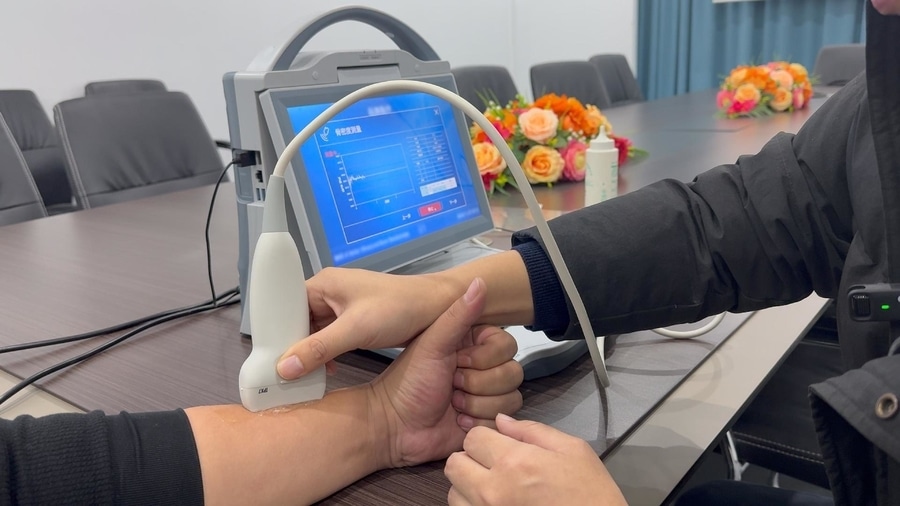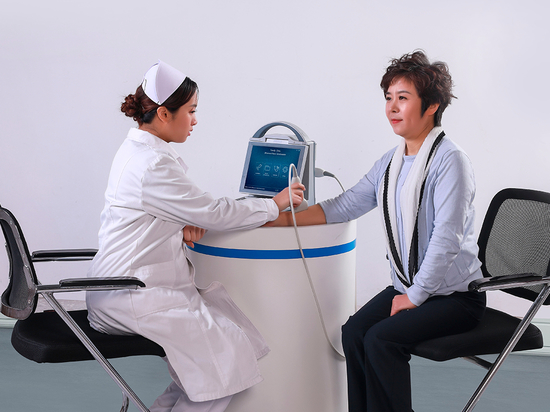
#Industry News
Care for bone health, start with bone density test!
Bone mineral density, or bone mineral density, refers to the amount of minerals per unit volume of bone.
What is a bone density test?
Bone mineral density, or bone mineral density, refers to the amount of minerals per unit volume of bone. The measurement of bone density can reveal the strength and density of the bone, which can help doctors determine whether the bone is strong enough to support the body's daily activities, or if there is a risk of fracture.
Who should have a bone density test?
The age of 30-35 is the highest bone mass and the most mature bone in a person's life, and then the bone of men shows a gradual downward trend, and that of women shows a cliff-like decline.
Women over 45
Because of calcium loss and decreased bone mass after age 45, bone density testing should be considered.
Women over 65 and men over 70
There are no other risk factors for osteoporosis that require bone density testing.
Women over 50 and men under 70
People with more than one risk factor (postmenopause, smoking, excessive alcohol or coffee consumption, lack of physical activity, and dietary calcium and vitamin D deficiency).
Have the following bad living habits
Long-term high consumption of coffee and carbonated drinks; People who don't diet properly; Chronic smokers and alcoholics; Daily deficiency and dietary VD deficiency; The bedridden for a long time.
People who take the following drugs for a long time
Glucocorticoids, thyroxine, heparin, gonadotropin-releasing hormone agonists, phenytoin sodium, phenobarbital, cyclosporin A, aluminum-containing scandiate, rifampicin, tetracycline, ion exchange resin, anticancer drugs.
Have a history of fragility fracture or a family history of fragility fracture;
Low sex hormone levels caused by various reasons;
X-rays show changes in osteoporosis, bone mineral density should be tested regularly.
Ultrasound bone mineral density test
Ultrasound bone mineral density test is a non-radioactive, high safety examination, often used for the presence of osteoporosis screening.
The ultrasonic bone density detector can measure the bone density at the distal end of the ulna and radius with high accuracy, compact design and easy operation. The scanning time is short and the data is accurate. While improving the comfort of inspectors and operators, it also reduces the radiation hazard to the human body.
Advantages of bone density examination
Early detection of osteoporosis and prediction of fracture risk.
It can accurately measure the bone mass of endocrine and metabolic bone diseases, and provide the basis for formulating safe and effective treatment plan to prevent the occurrence of fractures.
It is convenient to follow up the condition and evaluate the treatment effect.
Daily ways to increase bone density
Reasonable dietary nutrition: eat more foods containing calcium and phosphorus. Such as fish and shrimp, eggs, milk, dairy products, beans and so on.
Adhere to the scientific lifestyle: adhere to physical exercise, more sunbathing. Exercise can not only improve physical activity, protect bones, increase bone density and prevent osteoporosis. You can also control your weight and help protect your bones. Stop smoking and drinking, avoid excessive alcohol consumption and reduce the consumption of strong tea, coffee and carbonated beverages.
Warm reminder:
When it is diagnosed as low bone density, the cause should be identified and medication should be taken under the guidance of a doctor, which is of great significance to prevent further loss of bone mass. At the same time, bone density should be measured regularly after middle age. Women should be in the early menopause (about 45 years old), men should be around 50 years old, to the hospital for an initial bone mineral density determination, to observe the degree of bone mineral density changes in the later period.






